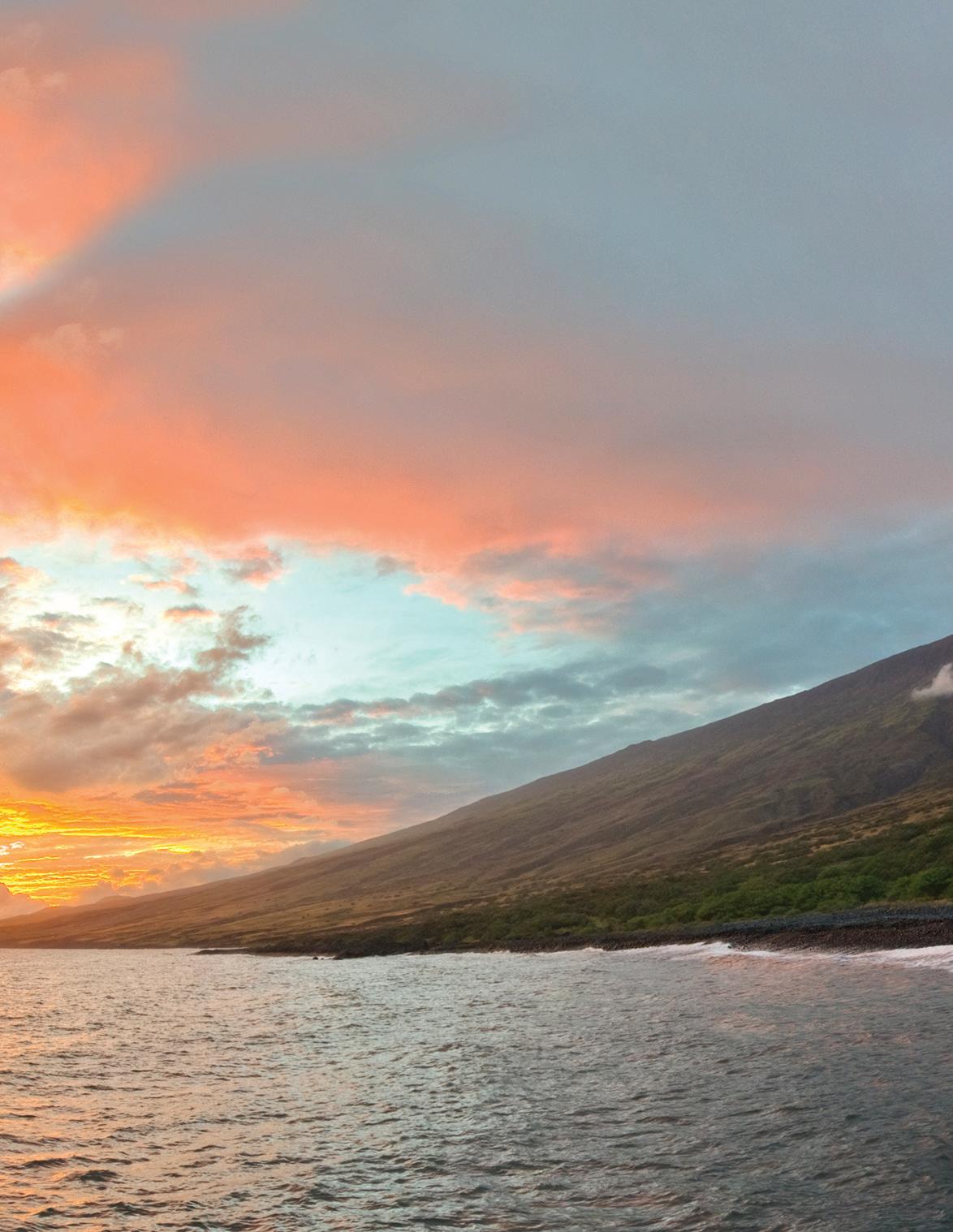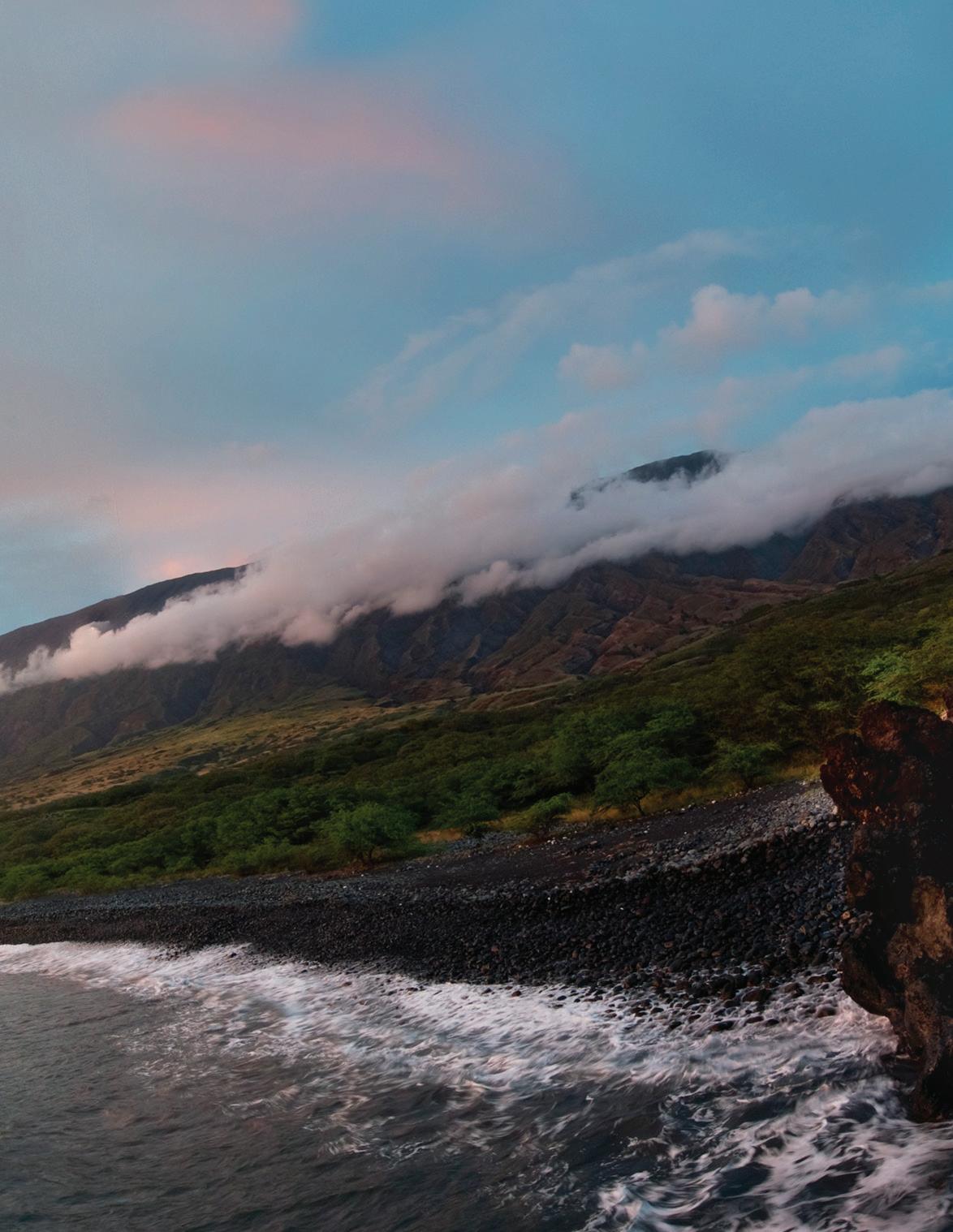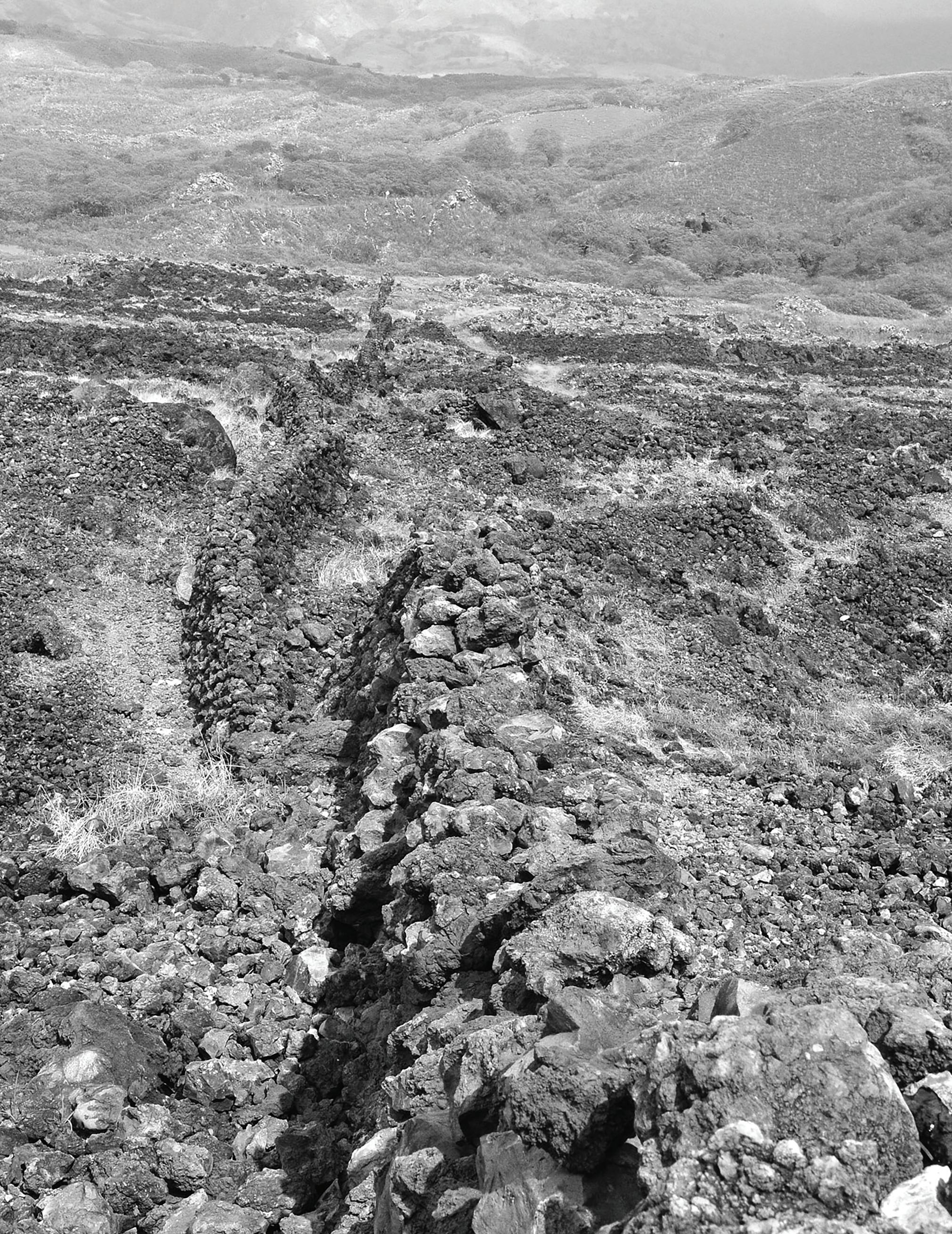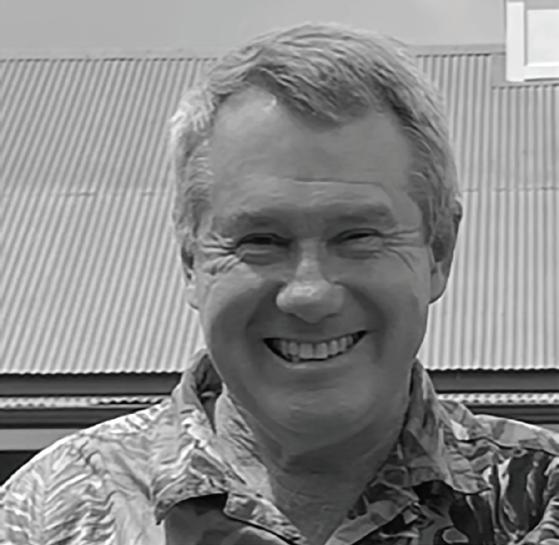
6 minute read
Nu‘u: Treasured ‘Āina of the Maui Ali‘i Nui
By Andrew Walmisley
Nuʻu is a wahi pana with a rich and stunning history. Though usually regarded as an ahupua‘a of Kaupō, it may actually have once been a collection of ahupua‘a known as an ‘okana.
Advertisement
Old maps of Kaupō show land division names in Nuʻu that appear to function like traditional ahupua‘a: Puukalaneo, Kailili, Hupuaa, Hawelewele, etc.
The fine canoe landing on Nu‘u Bay and the loko i‘a (fish pond) just back of the shore provided the ideal conditions for the development of the location as a royal center similar to the famous centers on Hawaiʻi Island in Kona and Kohala. Nuʻu may have “bookended” the chiefly center at Mokulau, demonstrated by numerous heiau (including at least two luakini) near the shore and running in a line up Haleakalā, the fine collection of kiʻi pohaku (petroglyphs), often associated with chiefly centers, and oral traditions that associate it with Aliʻi Nui Kekaulike.
In 1922, an old kamaʻāina, Kenui, told Thomas Maunupau, who accompanied archaeologist Kenneth Emory to Kaupō in 1922, that Kekaulike had a residence at Nuʻu, where “he was living with his people to farm and fish.” While the king was out fishing, his estranged brother, Kaaoao, came down from Haleakalā and recklessly pulled up Kekaulike’s crops, resulting in a battle that ended in the brother’s death. The tradition that Kekaulike’s sacred nīʻaupiʻo son, Kamehamehanui, was born in “Nuʻu mauka” in 1706 also suggests that the aliʻi nui had a strong association with this ‘okana (or ahupuaʻa).
The loko iʻa had historic associations with the aliʻi like similar fishponds across the channel on Hawaiʻi Island. It likely played a role in the economy of Kekaulike’s famed aloaliʻi (court) at Mokulau and may have been one factor in choosing Kaupō as his capital in the 18th century. The aliʻi prized the ʻamaʻama and awa harvested from them and had the live fish carried great distances by runners.

Nu'u Bay at Sunset.
Jonathan Starr
Kenui’s granddaughter, Caroline, born at Nuʻu in 1892, recollected to Mary Kawena in 1960 that the pond, bordered by a hau grove, “was used by the aliʻi in prior times and had ʻopae and a big moʻo (dragon goddess), that took a little boy and kept him in a cave for a week. She herself was nearly taken by the moʻo named Mākila.”
Kenui called the loko iʻa “Pupuka,” which means “ugly,” employing a Hawaiian poetic device of expressing superlatives by using opposites. It was, perhaps, the locals’ way of expressing their deep love for this valued resource. Kupuna Josephine Marciel called the pond Nuʻukalalawai (lālāwai means “prosperous”), which may also refer to its association with the high chiefs of Kaupō.
She was able to recall that “a person named Kala took care of the fishpond of the aliʻi at Nuʻu.” Just mauka of the small spring that feeds the loko iʻa there is a small house platform, which may have been the site of the kahu Kala’s home.
Nuʻu was treasured by Kekaulike’s descendants. Kekaulike’s hānai sons were the kapu twins, Kamanawa and Kameʻeiamoku and Kamanawa’s grandson, Kaleimoku, was awarded Nuʻu at the Māhele of 1848. Nu‘u may have been a gift to Kamanawa as a reward for his loyalty to Kamehemeha when he conquered Maui in 1795. Kaleimoku chose to relinquish twelve of the thirteen important ʻāina he possessed in favor of Nu‘u. In 1922, Maunapau reported that Nuʻu maka’āinana still remembered Kaleimoku: “Albert Kapaeko said that it was the chief Keliʻiahonui, hoahānau of Kaleimoku, who built the road of water-smoothed stones of Nu‘u. Fishing is what this chief did when staying here, so he made a path from the canoe landing to his house.”

The great wall of Nu'u.
Jonathan Starr
That beautifully preserved road, actually a portion of the 16th century “Piʻilani Highway,” can be seen today between Nuʻu landing and Waiū. Keliʻiahonui was also descended from Kekaulike and was briefly married to Aliʻi Nui Kaʻahumanu.
Kaleimoku was hoahānau of Kaʻahumanu, and lived at the royal court at Lahaina. He married Nohea, granddaughter of the famed Naeʻole who saved the infant future King Kamehameha from danger. After his death, Nuʻu eventually passed down to King Kalākaua, in whose estate it remained until the western portion was purchased in 1892 by James Campbell and the eastern by Antone Marciel, founder of Kaupō Ranch, in 1906. Kalākaua may have inherited Nuʻu through his descent from Kameʻeiamoku.
Paulo Kū was konohiki of the lands of Nuʻu before and after the Māhele. According to his illustrious son, Elia Helekūnihi (1839-1896), future teacher, pastor, lawyer, judge and twice member of the Kingdom of Hawaiʻi Legislature (1876 and 1887), the family kauhale was on the east side of Huakini Bay at the far western end of Nuʻu. The ʻohana claimed descent from Aliʻi Nui Kekaulike, and Kū was said to have been born in a great canoe of King Kamehameha’s famed “Peleleu Fleet” for the conquest of Kauaʻi off O‘ahu near the end of the year 1803. Kū’s father, Kanaulo, and mother, Mahoemakakau, joined the fleet in Kaupō. Mahoemakakau’s name, which can mean “twin with a fixed or steady eye,” is perhaps a reference to Kamanawa and his twin, Kameʻeiamoku.
Kū and Paul Nahaoleluaa, hānai uncle of Queen Emma and for thirty years beloved governor of Maui, were among the cadre of kaukaualiʻi in the extended ʻohana of Kaʻahumanu sent out to all the districts of Hawaiʻi to establish schools and Christianize the makaʻāinana.
Nāhaolelua was said to be the son or grandson of Kameʻeiamoku, Kamanawa’s twin, which accounts for his connection with Nuʻu. We are told that Kū was for a long time “leader of the church at Nuʻu,” his brother, Solomona Aki, was teacher at Nuʻu and their sister, Helekūnihi, married Nahaolelua.
Without missionary assistance, these early Hawaiian converts by 1827 had established a school and Protestant church mauka of the loko iʻa and by 1840, a total of two churches and nine schools in Kaupō with 550 children. Aki’s schools at Nuʻu and Waiū alone had a whopping 110 children!

Andrew Walmisley
The doctoral work of Andrew Walmisley explored nineteenth century Maui colonial history through the lens of the life of one Hawaiian man, Elia Helekūnihi (1839-1896), who was born at Nuʻu, Kaupō, into a lesser aliʻi family in the lineage of King Kekaulike. Helekūnihi was a key player in the major events that defined his people as they struggled to find their way through the painful challenges of that century: depopulation, disease, and loss of sovereignty.
Andrew Walmisley received his doctorate in Hawaiian History from the University of Birmingham in the U.K. He is currently doing research for a comprehensive history of Maui.










